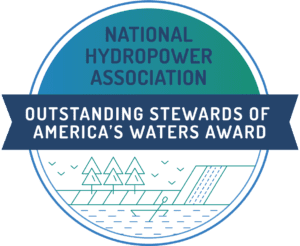NHA Celebrates Achievements of Water Power With OSAW Awardees Recognized at Clean Currents 2023
Cincinnati, OH (October 12, 2023) The National Hydropower Association (NHA) awarded three organizations with the Outstanding Stewards of America’s Waters (OSAW) Award at Clean Currents 2023 in Cincinnati, Ohio. The OSAW Award honors deserving organizations in the hydropower and marine energy industry for projects that exhibit exemplary operational, educational, historical, recreational, or environmental enhancement and stewardship.
The winners of the 2023 OSAW Award are as follows:
In the category of Public Education, the winner was Grand River Dam Authority for its Beyond the Dam – Improving Water Quality One Community at a Time program.
In the category of Recreational, Environmental Enhancement, the winner was Duke Energy Corporation for its Great Falls Reservoir Re-Diversion Project.
In the category of Operational Excellence, the winner was WWS Wasserkraft for its Upper Collinsville Hydroelectric Power Plant project.
Read on to learn more about the winners and watch the OSAW Award video here.
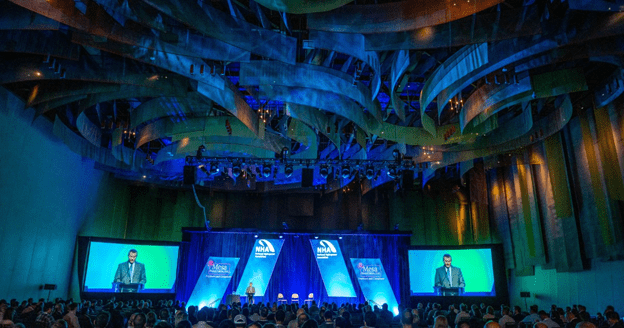
Grand River Dam Authority – Beyond the Dam – Improving Water Quality One Community at a Time
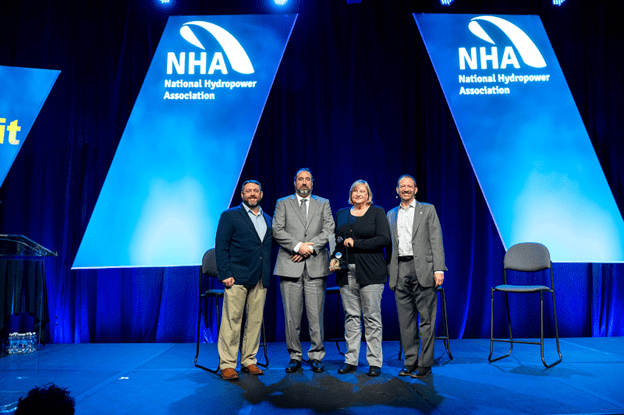
The Grand River Dam Authority is a public power provider that sells electricity to several smaller communities throughout Oklahoma, including one location in Kansas and another in Arkansas. These communities often struggle to address stormwater runoff issues, and as a result of its success with watershed conservation programs deployed in GRDA’s watershed, GRDA began offering similar programs to its customers.
By providing workshops and educational events for residents, GRDA has helped communities better understand their impact on water quality, communicating the community impact on water power and how simple changes can add up to make a big difference.
Through the creation of workshops covering landscaping for water quality, soil health, pollinator habitat improvement, erosion demonstrations, as well as providing rain barrels, wildflower seeds, and discounted access to three-day educator workshops and hands-on activities for children, GRDA has helped the communities it serves better understand how to reduce impact on local bodies of water while demonstrating the interconnection of water and electricity.
Duke Energy Corporation – Great Falls Reservoir Re-Diversion Project
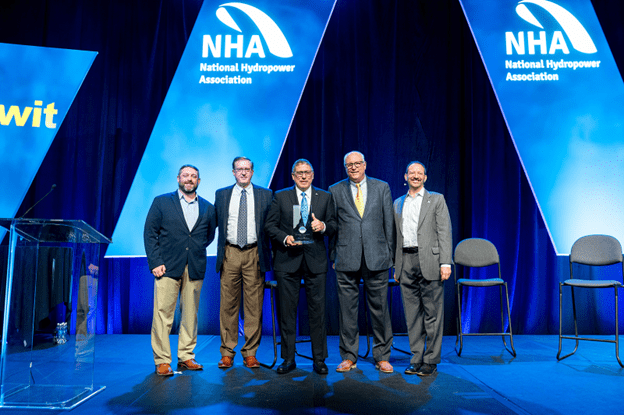
Great Falls Reservoir is the site of re-diversion of the Catawba River in South Carolina. The work grew out of a negotiated stakeholder agreement and the FERC license for the Catawba-Wateree Hydroelectric Project to restore aquatic habitats while providing recreation access to the natural whitewater river channels.
In 1907, the creation of the Great Falls Reservoir required the diversion of the river from two natural whitewater channels called the Long Bypass Reach (LBR) and the Short Bypass Reach (SBR). Returning water to SBR required the installation of pneumatic gates while the LBR flow release consisted of two breaches in the overflow spillway — one designed for habitat flows and one specifically designed for recreation flow releases. In order to provide public access to these channels, this effort required the construction of a large access area and included restoring the remains of a building once part of a fertilizer complex constructed in 1910.
The engineers and contractors who envisioned and implemented the Great Falls Re-Diversion Project focused on the successful creation of world class whitewater river channels, the enhancement of natural habitats, and the restoration of a historic structure. The Great Falls Re-Diversion Project is expected to boost tourism for Great Falls, South Carolina, as well as the surrounding area.
WWS Wasserkraft – Upper Collinsville Hydroelectric Power Plant Project
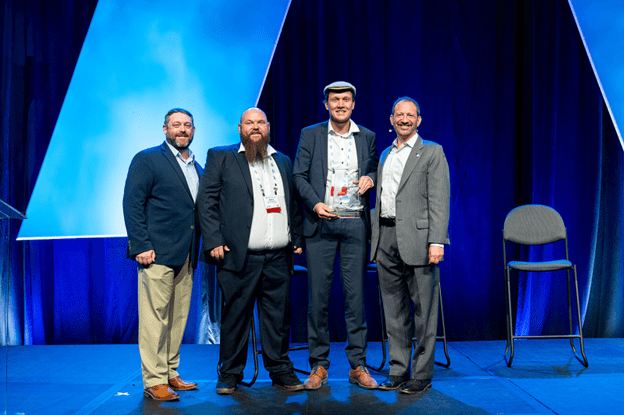
In 2018, WWS Wasserkraft and Canton Hydro approached the town of Upper Collinsville, Connecticut, with a proposal to restore power generation, create safe passage for fish, and add recreational opportunities to the Collinsville Dam – a project constructed in 1867.
The project, which recently completed construction, added much needed improvements to the Collinsville Dam. Previously, the dam had acted as a barrier for fish migration for nearly 200 years while remaining unpowered since 1966.
One of the primary goals of the project was to raise the water level in the impoundment by three feet, which was achieved through the implementation of automatic crest gates. This increase in water level created new opportunities for recreation, including kayaking, and the addition of a portage has made it easier for kayakers to navigate the area.
The issue with fish passage was alleviated by installing a Denil fish ladder, which provides upstream passage, as well as a fish slide with plunge pool for downstream passage in front of the turbine. Additionally, two new options have been introduced to specifically aid in eel migration.
The old turbine house also received a new, efficient Kaplan turbine, which was manufactured and designed by WWS Wasserkraft. The Kaplan turbine represents a significant contribution to the local energy supply while acting as a great example of sustainable energy production.
###


